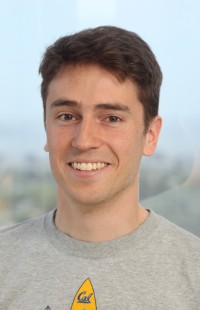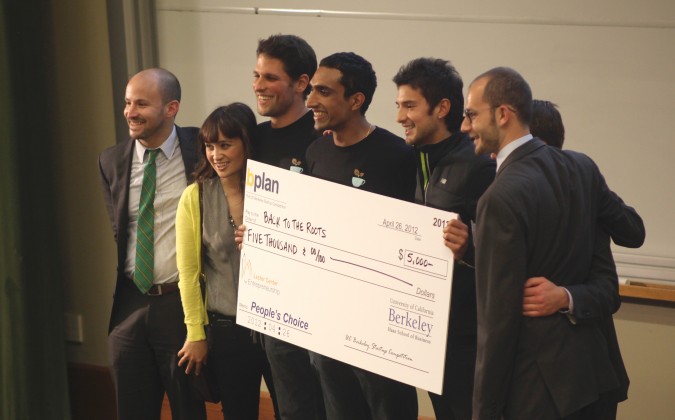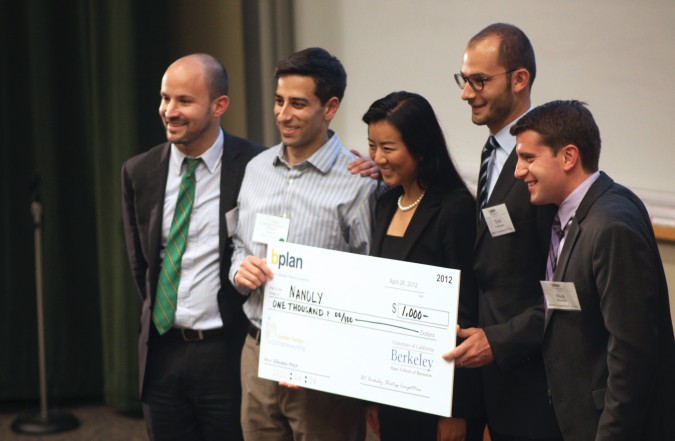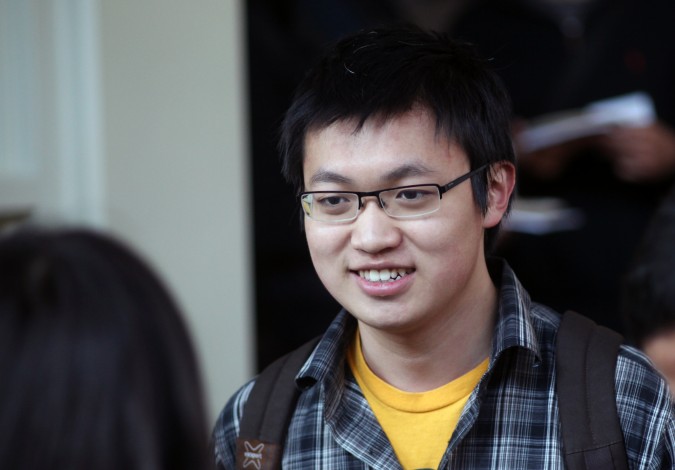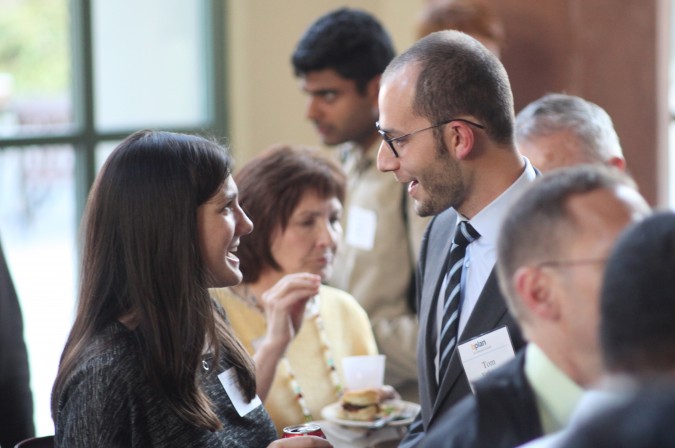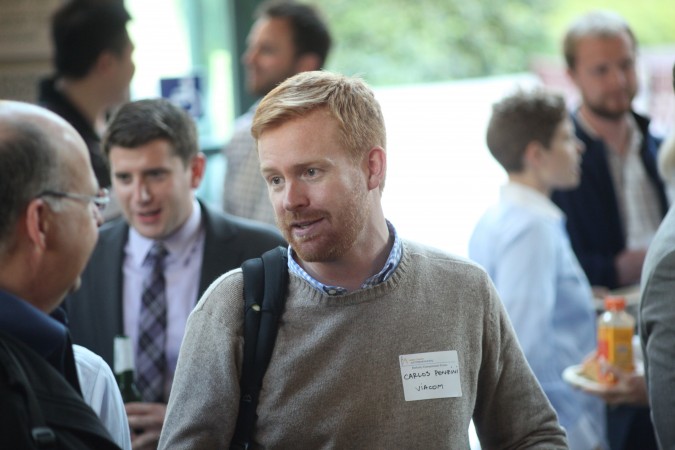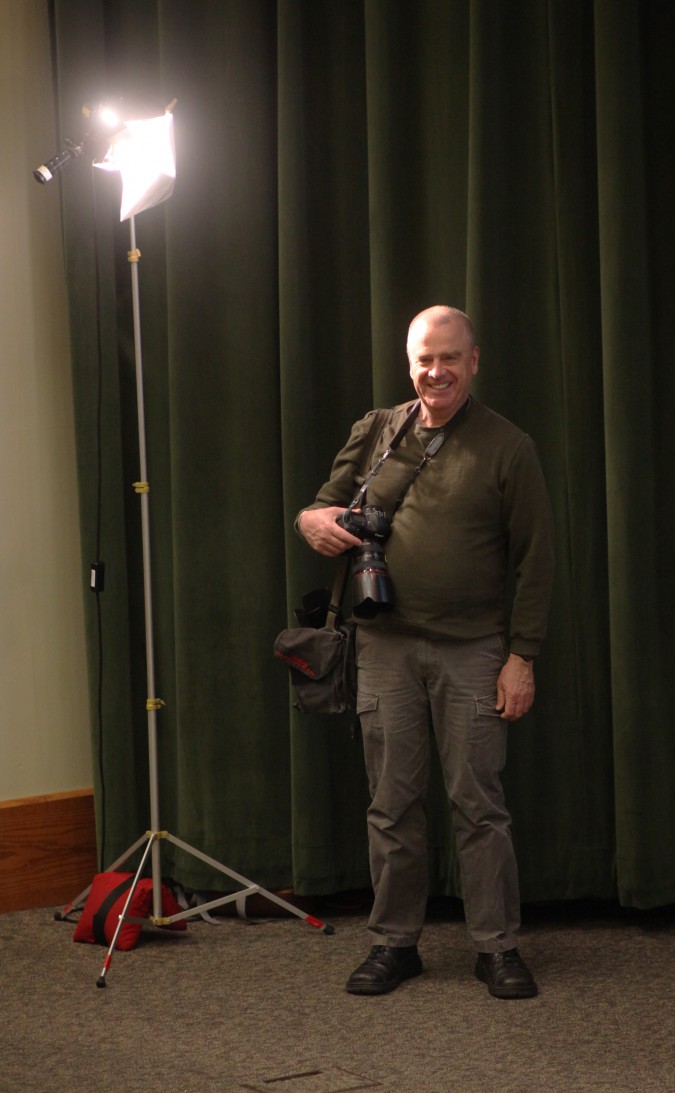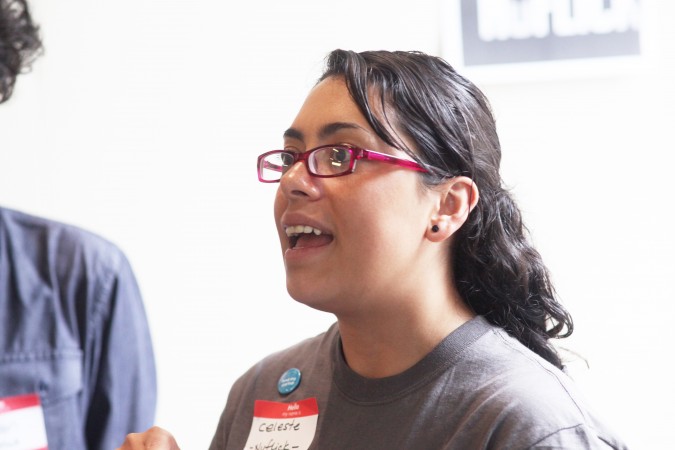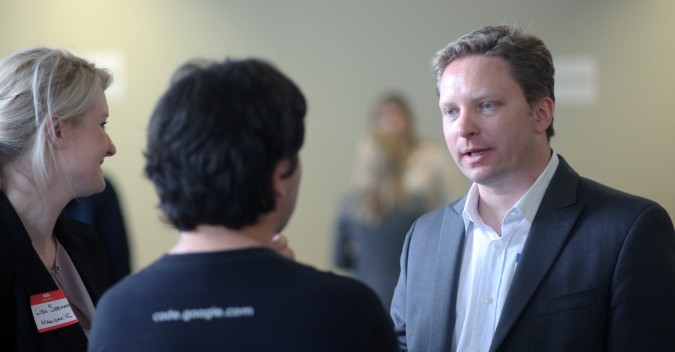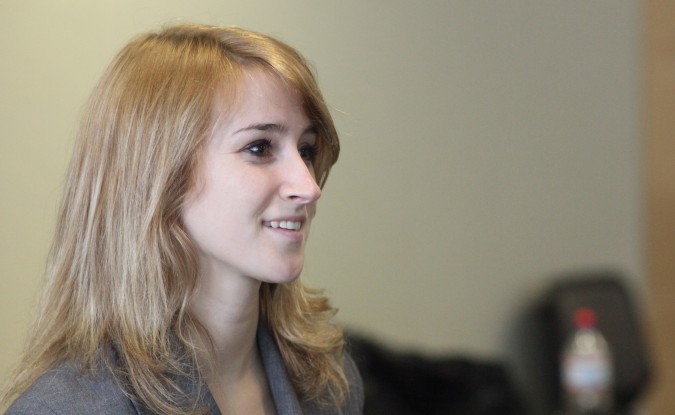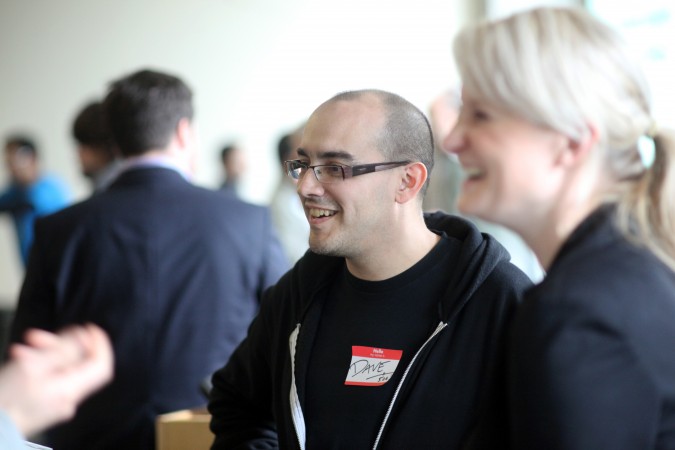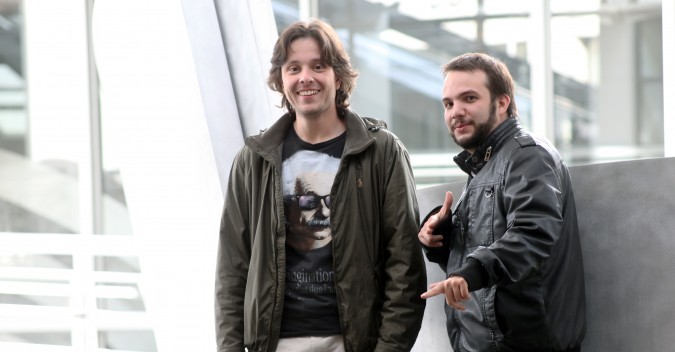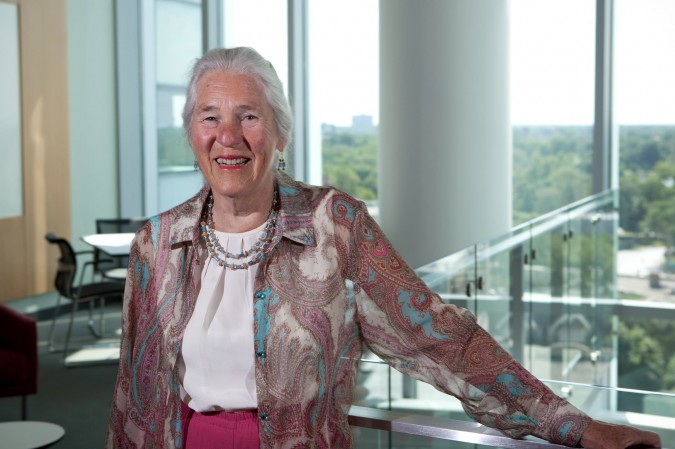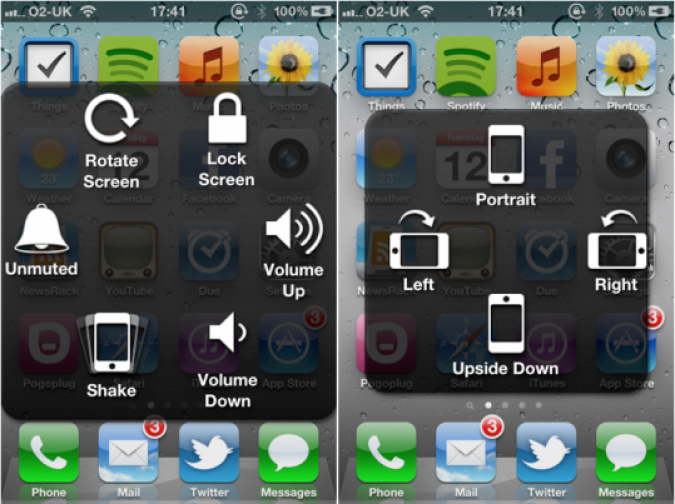Archive for the ‘Technology’ Category
I meet the Picatcha.com team at the University of California Berkeley Skydeck startup accelerator
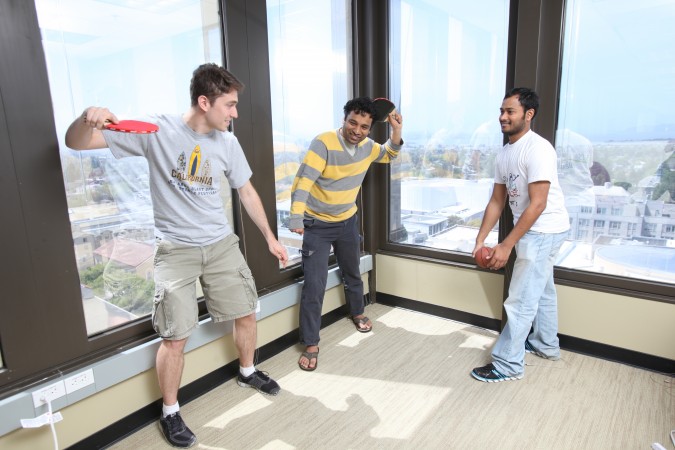
Picatcha.com team playing ping pong with a basketball. May 2, 2012, at University of California Berkeley Skydeck startup accelerator. Photograph by Kevin Warnock.
On May 2, 2012 I met with Satish Polisetti, Dhawal Mujumdar and Sean Carey of Picatcha.
Picatcha is a made up word combining ‘picture’ and ‘Captcha.’
Captcha stands for Computer Automated Public Turing Test to tell Computers and Humans Apart. Captchas were invented by researchers at Carnegie Mellon University.
Even if you don’t recognize the word captcha, you know the test. Here’s an example of Captcha used by Facebook [where I encourage you to subscribe to my posts]:
This Captcha was posted to the photo sharing site Flickr because the first word is difficult to read. You can see Flickr user Chance Abbatoir couldn’t make out the word and wrote wtf? in its place. Wtf is short for ‘what the fuck’ for my readers who aren’t familiar with this slang term.
This illustrates the problem Picatcha is trying to solve.
Regular Captchas similar to the example from Facebook here are too easy for computers to figure out. That allows bad guys to do things they should not do, like buy hot concert tickets as soon as they go on sale, bumping out actual people by overwhelming the websites where the tickets are sold, such as at TicketMaster and Live Nation. The ticket sites assume the buyers are legitimate because the Captchas are correctly deciphered. As a result, more concert goers have to buy their tickets at inflated prices on the secondary market.
In response to such fraud against web properties, traditional Captchas are getting more difficult for humans to solve, such as the one shown here from Facebook. I suspect it says ‘N 1/4’ but I can’t be certain. Can you?
Computers and software are improving. There’s an arms race between conventional Captcha writers and the bad guys. The bad guys are winning.
Picatcha has a different approach.
Picatcha presents a challenge that’s currently difficult for a computer to solve.
The Picatcha twist is that users are asked to look at a set of images and identify the subset that matches a word. For example:
In this example the user has to click on the two middle pictures on the top row, and the second and last picture on the second row. Teaching a computer how to solve this puzzle is much harder than training optical character recognition software to decipher regular Captchas, according to Picatcha. Think about it from the computer’s perspective… the Picatcha way requires machine vision to identify arbitrary objects. OCR only has to deal with 26 letters and 10 digits. A computer trained to break Picatchas would have to handle a vast array of images, which could be crude line drawings up to detailed color photographs.
Picatcha does a lot of other things that make it more compelling than what I’ve so far described.
They allow customers to use images of their products in their picture captchas. Imagine how this would thrill consumer product companies. Imagine how personal this makes the test for users. Suddenly the access tests can become fun, not irritating.
You solve Picatchas by clicking or touching, not typing, making them much more friendly to solve from smart phones and tablets.
There’s extra tricky security happening under the covers, I was told, so this is not a quick programming project to duplicate.
Even more compelling is the Picatcha system can vary the images depending on who the user is. That’s right, the system can tap into your location and demographic data that Picatcha has access to via commercial ad serving services. This strikes me as a brilliant way to enhance user satisfaction and make it more likely they’ll sign up for or buy whatever is behind the Picatcha.
I am impressed with Picatcha. So were the semi-final round judges for the 2011 University of California Berkeley Business Plan Competition, hosted by The Lester Center for Entrepreneurship & Innovation and led by Executive Director André Marquis. Picatcha competed in that competition in 2011 and advanced to the elite final group of eight teams [Note to the Berkeley Business Plan Competition organizers: Keep these links valid in perpetuity. Right now it appears only two years of winners are identified at your site. All winners and finalists back to the 1999 inception of the competition should be listed. Thank you.]. Picatcha collected a cash prize for their efforts. It’s very, very difficult to advance to the finals in that competition… I know as I was a semi-final round judge in that competition. I was not a judge for Picatcha, as I served on the Products & Services track, and Picatcha competed on the Information Technology & Web track. I did not meet the Picatcha team last year at the finals, as I was not yet a tech blogger.
Picatcha started as a school project for Co-Founders Mujumdar and Polisetti when they were students at the School of Information at University of California, Berkeley. They described their work in an attractive summary report. Their Advisor was Bob Glushko.
Picatcha is a hosted service, so its customers don’t need to install any software on their web servers. According to the front page of the Picatcha website today, the company has served up over four million access tests so far, on over 200 customer websites.
When I was meeting with Co-Founder Dhawal Mujumdar last week, he showed me the Picatcha implementation for a brand so famous you are all but certain to have heard of it if you live where their product is sold — M & Ms, the chocolate candy from Mars that melts in your mouth, not on your hands.
Picatcha is sharing office space with other impressive startups at Skydeck, the startup accelerator at University of California at Berkeley, in Berkeley, California USA. I met the Picatcha team after I informed Eliot Sun from Kloudless, Inc. that I’d like him to introduce me to another team, as I had time before my next meeting, and I wanted to be productive. I’ve wrote about Kloudless yesterday, May 7, 2012. I took the pictures for this post. Click on them to see them at full 21 megapixel resolution. There are many more good shots of the Picatcha team playing basketball ping pong in a public album on my Facebook page.
Meet Kloudless.com, a UC Berkeley startup that’s bringing order to your Gmail attachments
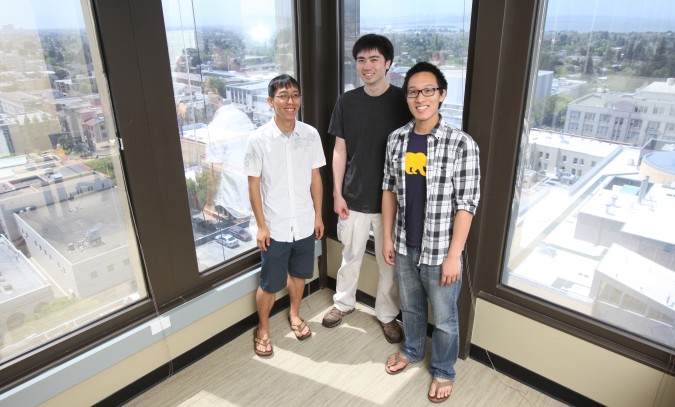
Timothy Liu, Brian Tang and Eliot Sun - three of the four co-founders of Kloudless, Inc., May 2, 2012. Photo by Kevin Warnock.
On Tuesday, May 2, 2012, I met with Eliot Sun, co-founder and CEO at Kloudless, Inc., winner of the IT and Web track at the 2012 Berkeley Startup Competition.
Sun and his three co-founders, Timothy Liu, Brian Tang and Vinod Chandru, have built an impressive productivity utility for use with Gmail, Google’s web based email service. I didn’t get to meet Chandru, which is why he’s not pictured here, as I took all of these pictures. Click on them to see them full size.
Liu, Tang and Sun allowed me to photograph them in their corner cubicle of the University of California Startup Accelerator @Skydeck, commonly referred to around campus as simply Skydeck. Have a look at the sweeping view in the photographs here. That’s San Francisco’s skyline directly behind the heads of Tang and Sun. Click the picture and wait for it to load in a new window. Then click the picture again to see the full size version. You can clearly see the San Francisco Bay Bridge through the glass window.
The Skydeck is located on the penthouse floor of the tallest building in Berkeley, at 2150 Shattuck Avenue, Berkeley, California USA. This building is at the the top of the escalator from the circular exit to the Berkeley BART station.
Kloudless is still in private beta, and I have not personally used the service. But Sun did give me a great demonstration of the working site.
Eliot Sun knew up front that I am a blogger and that I would write this post.
Kloudless is targeted towards users that receive a lot of email with important attachments. Emails that contain attachments fill up email storage far faster than emails without attachments. Search in Gmail does not look inside attachments, according to Sun.
What Kloudless does is hard to believe hasn’t been done before, as it’s brilliant.
Kloudless has a plugin for Gmail that modifies the user’s options. A new option when one receives an email with an attachment is to move the attachment to that user’s account at either DropBox or Box, which are popular cloud storage services offered by two different companies.
If a Kloudless user directs the service to move the attachment file to DropBox or Box, the Kloudless service does so. What makes Kloudless deserving of winning competitions is that it remembers where it put the file. The next time the user views that email in Gmail, they won’t have the attachment directly available to them from Google. However, there will be a link to the file that is now stored in the cloud at either Box or DropBox. A file can be stored at both services at once, if the user so chooses.
Kloudless is storing the association between original email and the stored attachment now in the cloud outside of Google.
There is a screen in Kloudless where users can review all their attachments in a view that omits all the emails that did not have attachments originally. This condensed view is compelling, for its brevity. If a user finds a file they are interested in, that user can click back to the original email message that brought the file to them in the first place.
There’s a lot to like about the Kloudless business model. They are not a cloud storage provider, so they avoid having to store petabytes of data. They’re storing metadata, not attachments. Their own hosting costs should be moderate since they still have to pay for the bandwidth to move files around between Google and the cloud storage providers.
Kloudless is likely to be able to charge for this service, because it gives such useful control and quick access to users.
Users that embrace Kloudless are likely to stay customers forever, because if they quit the service, presumably they will lose their ability to associate their attachments with their emails, which could be painful.
Eliot Sun is a smart guy. He holds degrees in Mathematics and Economics as well as minors in Chinese and Latin, all from UC Berkeley. You don’t frequently find engineers that seriously studied Latin.
Sun’s three co-founders Timothy Liu, Brian Tang and Vinod Chandru also all graduated from UC Berkeley. Liu is CTO, Tang is Chief Scientist and Chandru is Vice President of Engineering.
Sun also had the smarts to get his name as a domain name, which everyone should do if they can. There’s no better beach front real estate for your personal brand than your own name followed by .com.
Global Brain Corporation, a venture capital firm in Japan, invited Sun to attend their annual Global Brian Alliance Forum in December, 2011. Sun spent four days meeting with potential partners and one day at the Forum. Sun’s Kloudless presentation at the Forum was judged the best pitch of the event.
On September 22, 2011, Kloudless won first place in the Plug and Play EXPO at the Plug and Play Tech Center.
Including the IT and Web track at the Berkeley Startup Competition last month, that’s three wins in less than six months, and Kloudless hasn’t even launched yet.
Kloudless is a company to watch.
PS – I posted 16 more shots from my photoshoot with three of the four Kloudless co-founders to my Facebook profile, where you can subscribe to my updates. I had my studio lights with me as I was on my way to a photoshoot with model Annika, from my blog post about AlbertMing, an early adopter of Skydeck’s services that’s since moved to their own office space in Berkeley.
2012 Berkeley Startup Competition Finals at University of California Berkeley
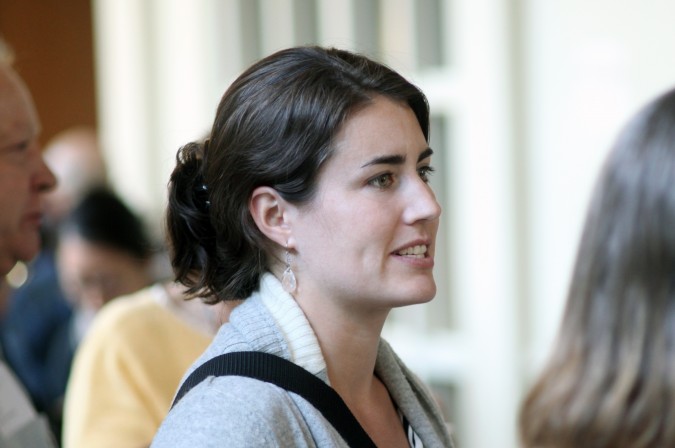
Kate Garrett, co-founder of Calcula Technologies, Grand Prize winner of the 2012 Berkeley Startup Competition, April 26, 2012
On Thursday, April 26, 2012, I attended the Berkeley Startup Competition Final Awards Ceremony at the Anderson Auditorium on the campus of The Haas School of Business at the University of California at Berkeley. Here is the PDF format file of the 2012 Berkeley Startup Competition Final Awards Ceremony program booklet that was handed out at the final awards ceremony.
There are many people mentioned in the booklet, like the Co-Chairs for the 2012 competition, Nick Nascioli, Adam Sterling and Tom VanLangen, as well as Lester Center Executive Director Andre Marquis and Haas School of Business Dean Richard Lyons.

Grand Prize winner Calcula Technologies at the Berkeley Startup Competition, April 26, 2012. Left to right: Nick Mascioli (co-chair of the Competition), Adam Sterling (co-chair of the Competition), Kate Garrett, Dan Azagury, David Gal, Buzz Bonneau, Tom VanLangen (co-chair of the Competition)
I most recently wrote about the announcement of the finalists for this competition, which happened two days earlier, on April 24, 2012.
Calcula Technologies won the Grand Prize and the Life Sciences Track for their clever system that vacuums kidney stones out of a patient’s urethra in just ten seconds. According to the team’s presentation, doctors today let stones pass from the body naturally and often quite painfully unless they are larger than 10mm in diameter. Patients today are often in such agony that they visit the emergency room, which racks up hundreds of millions of dollars in charges per year. For the sub 10mm stones, doctors just write prescriptions for narcotic pain killers and send the patients home with the stones still on their excruciating slow path out.
In the future, when and if Calcula gets their system approved by regulators, patients could have a catheter inserted into their urethra and the stone could be sucked out in seconds, presumably at great relief to the patient. This work could be done at the office of a urologist, without surgery, and the Calcula team said there is already a prized and lucrative reimbursement code in existence in the insurance industry, so if they build this system, they will be able to get paid and make a profit. I can understand why Calcula Technologies won the grand prize. Kidney stones are no fun, I’ve heard, and this system seems very appealing. The team showed a video of a fake kidney stone being sucked out of a pig’s urethra in just 10 seconds. It was very impressive and very memorable.
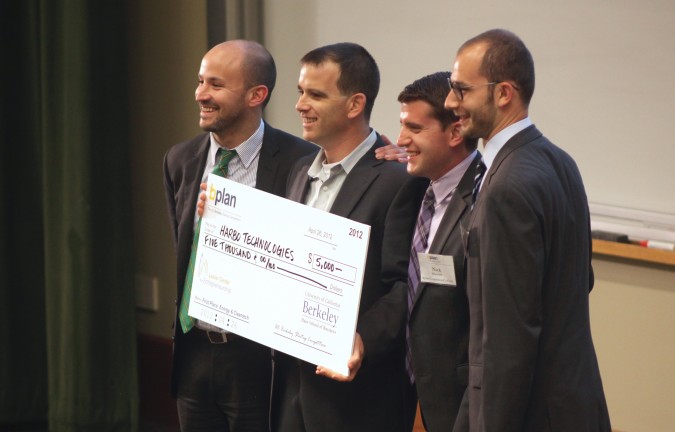
First Place Energy and Cleantech winner Harbo Technologies at the Berkeley Startup Competition, April 26, 2012
Kloudless, Inc. won first place in the Information Technologies and Web Track. I am going to be interviewing Kloudless, so I’ll save my remarks for another blog post.
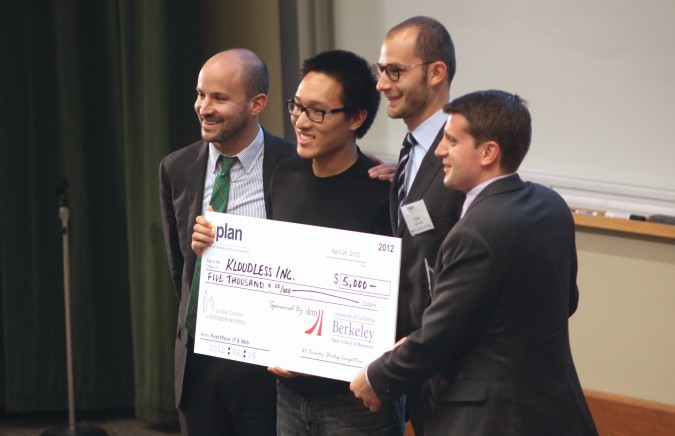
First place IT and Web Track winner Kloudless, Inc. at the Berkeley Startup Competition, April 26, 2012
Like Calcula, Back to the Roots (2935 Adeline Street, Oakland California 94608 USA) won two awards. First, they won the Products and Services Track, and then, thanks to real time votes from the audience and viewers of a live stream on the Internet, they won the Peoples’ Choice Award.
I have written about Back to the Roots twice before.
I have one of their products at my house right now. It works.
Back to the Roots collects used coffee grounds from coffee houses like Peet’s Coffee and mixes it with a ‘secret sauce.’ The combination is boxed up and sold at over 1,000 stores in the United States, including at Home Depot and Whole Foods Market. A consumer buys the cardboard box and partly opens it, exposing the insides. The consumer then mists the contents of the box with water using an included spray bottle. After ten days of twice daily misting, the consumer harvests a bountiful crop of oyster mushrooms that have grown directly out of the side of the box. Once one side has been used up, the consumer opens the other side to repeat the growing cycle for a second harvest.
That story has been told thousands of times, including on the CBS Evening News, an influential national newscast in the United States.
During their public presentation, the Back to the Roots team disclosed future plans that I find fascinating. Since this event was public and was streamed live to the Internet, I feel that it’s OK to write about what I learned, as there were no statements that anything said was to be considered secret.
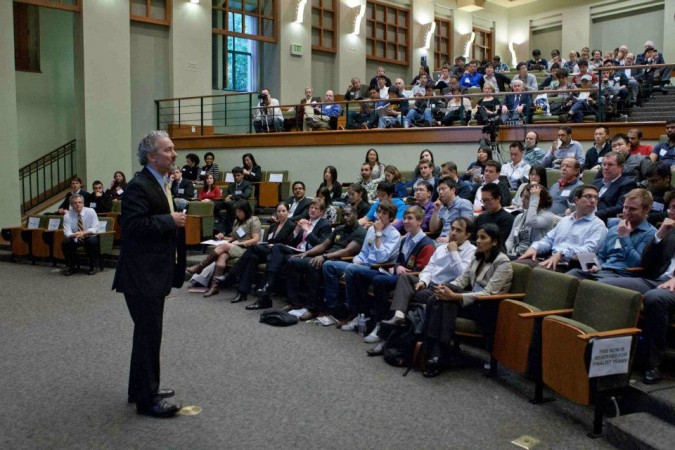
Haas School of Business Dean Richard Lyons speaks at the Berkeley Startup Competition Finals, April 26, 2012. Photograph by Bruce Cook.
The box contents will soon include vegetable plant seeds, and the rest of the box and liner will be biodegradable. Currently, the box is lined with what looks like conventional plastic. My box is from November, 2011, so things today may be different. In the future, or perhaps even already, the box will be lined with either nothing or something else that’s biodegradable. Perhaps what looks like conventional plastic to me is really biodegradable plastic, like some plastic trash bags are made of.

Venture capitalist Michael Berolzheimer, of Bee Partners, attends the Berkeley Startup Competition, April 26, 2012. Berolzheimer also leads the Haas Founders group that I am a member of.
Why do this?
Once the box is biodegradable and contains vegetable seeds, that means that after the two mushroom harvests the box can be planted in dirt for ’round three’ of production — vegetables. The mushrooms came from the waste stream from coffee houses. The round three vegetable garden will come from the waste stream of the mushroom garden.
This is beautiful.
What’s coming down the road from Back to the Roots?
I am overjoyed to report the answer may be affordable aquaponics kits.

Kevin Esse at networking hour prior to attending Berkeley Startup Competition Finals, April 26, 2012
I have written before about my love for aquaponics.
Aquaponics is food production gardening enhanced by growing edible fish in symbiosis with vegetable plants. Both parts of the system are made more productive by the presence of the other half. Fish poop gets converted by bacteria into rich fertilizer. The fish grow faster because the plants keep the fish tank cleaner. It’s a great growing system that I feel should take over the world on such a scale that every person has their own system at home.
I am too busy in life to advance this dream, but the team at Back to the Roots has time and energy and market traction, so I think they would be ideal to push aquaponics to a large audience. I am so excited about this that I have already offered to tell the company everything I know about aquaponics free of charge to encourage them to get this to market.
I suspect they plan to start with small, under USD $100 demonstration kits. This in my mind is the way to start.
I bought my startup supplies for my aquaponics system from The Aquaponics Source. This online retailer sells complete systems, but the price is too high for people to buy casually, at over USD $1,000. I believe a profitable sub $100 kit could be sold, as what’s required is similar to what’s inside a Mr. Coffee brand coffee maker — two water containers, a pump, a heater and some electronics to coordinate the steps. I can get a nice computerized Mr. Coffee coffee maker for about USD $25 from Amazon, so even in the smaller quantities a demonstration aquaponics system would sell in initially, I think it can be done.
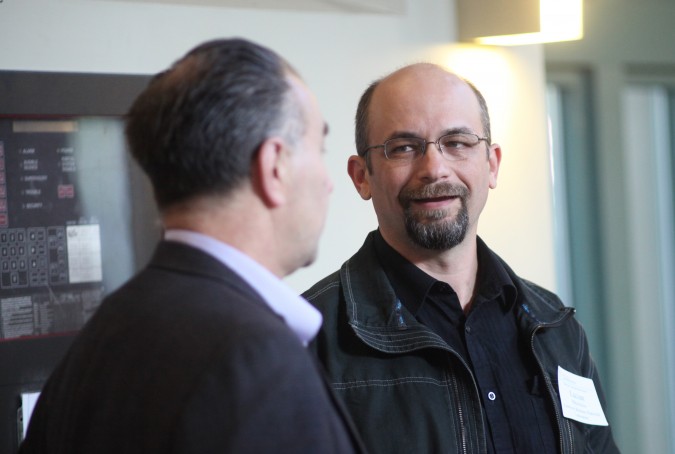
Lucian Mihailescu of Lawrence Berkeley National Laboratory attends the Berkeley Startup Competition, April 26, 2012
I love advising startup companies, and I would particularly like to advise about aquaponics, even though I know relatively little about the subject, since I’ve only built one demonstration system so far. My system was a modest success for I grew the largest and sweetest tomatoes I have ever eaten.
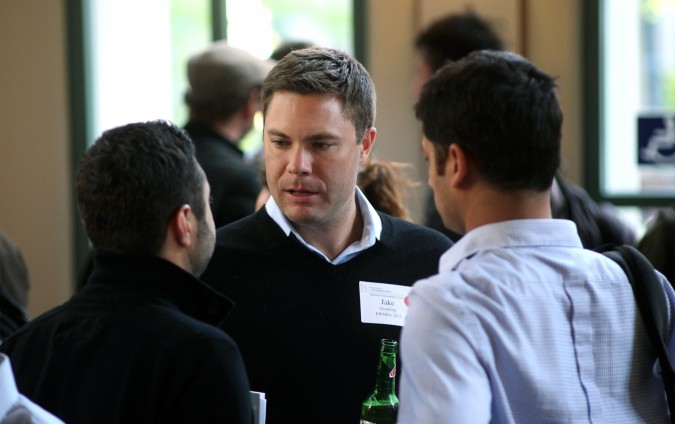
Jake Gentling at the networking hour prior to attending the Berkeley Startup Competition Finals, April 26, 2012
HARBO Technologies won First Place in the Energy and Cleantech track. I introduced myself to co-founder Boaz Ur and mentor John Matthesen after the conclusion of the event. The company is working on something I find impressive and interesting. I have made arrangements to interview the team, so I will hold my remarks until after that interview.
My friends at Modify Industries took home a USD $1,000 prize for coming in second place in the Products and Services Track. This outcome was inevitable, and I predicted it accurately the moment I saw Modify was competing with Back to the Roots. Back to the Roots simply has had much more commercial success so far. While Modify has sold between 10,000 and 100,000 watches to such companies as Google and Hewlett Packard, they haven’t yet cracked the retail store market, and they haven’t been on the evening television news. It’s rare for a company to be so far along like Back to the Roots, but still be eligible to compete in the Berkeley Startup Competition. In all other years where there was a Products and Services Track, Modify probably would have won that track. I pay attention to these things because I was a judge for this competition for the eight years through 2011. This year I mentored the team University Gateway, which did not make it to the finals since Modify and Back to the Roots filled up the Products and Services Track.
Modify gave an impressive and bold presentation, where they outlined a dream for their enterprise far bigger than time pieces. They probably adjusted their pitch to compete with Back to the Roots. But they forgot to show their product in action amid all the grand dream spinning. How so? They forgot to personally show the audience how to change a watch element from one silicone strap to another. This is worth showing at every pitch for it’s compelling and like nothing I’ve seen in the watch business. No tools, no training — 10 seconds and you have an all new look.
Finally, I want to give some space to my friend and fellow photographer Bruce Cook. I’ve known Cook since nearly the inception of The Lester Center for Entrepreneurship & Innovation. He’s a fixture at all sizable Lester Center events. He has his own photography business, Bruce Cook Photography, and is not a University of California employee. I can’t recall there ever being a different photographer for a Lester Center event. The picture above is of Cook standing under the video light in Anderson Auditorium. The picture below is of Cook taking a picture during the networking hour in the Bank of America Forum, the large gathering area just outside of the Anderson Auditorium. Cook took the picture above of Dean Lyons speaking to the audience. Thank you Bruce!
If The Lester Center is reading this, may I suggest that you contact Cook and work out a deal where his vast library of photographs of Lester Center events over the last twenty years can find a permanent home on the Lester Center website and in the University library system. Cook has photographed some of the most important figures of our time, and the tremendous majority, over 99%, of his photographs have not been published. I think these photographs should also be published on Facebook so that it’s easy to crowd source the identification of the people in the pictures, via the Facebook tagging system. Once the faces are tagged, then the captions on the Lester Center website can be updated to reflect the identities of those pictured.
Why do this?
The Lester Center and its events are documenting history. It’s that simple. Bruce Cook has a treasure trove of historic pictures that few have ever seen.
As an added bonus, publishing and captioning Cook’s 100,000+ pictures will boost traffic to The Lester Center’s website, as people search on Google and similar sites for the many luminaries Cook has photographed. The search engine optimization benefits to posting these pictures will probably overshadow every other single project you could undertake.
This is my idea alone.
Cook did not plant this, suggest this or hint at this.
I’ve been thinking about this for years now, and here seems like a fine place to promote the idea.
I believe I have shared this suggestion with Jerry Engel when he was Executive Director of The Lester Center, but that was only in passing at a hectic Berkeley Entrepreneurs Forum, not a written proposal such as this one.
Please consider this official advice, and let me know when I can blog about the happy news. Thank you.
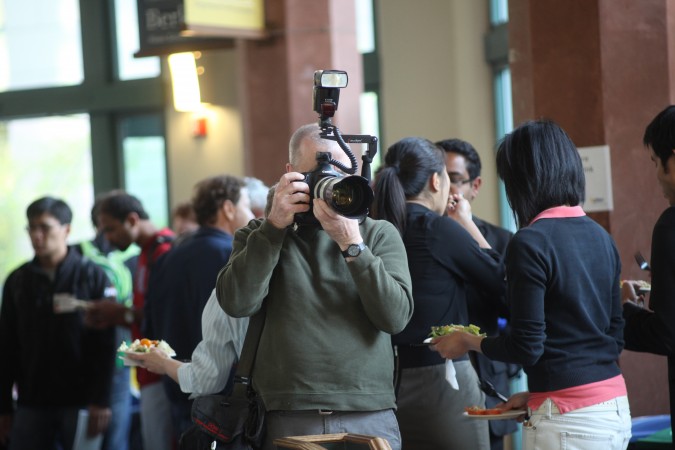
Bruce Cook, the photographer for The Lester Center events, covers the Berkeley Startup Competition, April 26, 2012
I introduced myself to all the finalist teams except AdrenaRX. I believe the members from that team departed before I had a chance to find them.
I offered each of the eight finalist teams except for Modify and Back to the Roots the opportunity to be interviewed by me for a future blog entry. Two of the teams have contacted me to schedule an interview. Four teams have not yet contacted me.
I know the Modify and Back to the Roots founders, so I did not offer to interview them. This was not meant as a snub — I simply forgot to offer in my excitement of congratulating them. Both teams are doing so well they don’t need my blog coverage, but if they would like more in depth stories, I am happy to meet with them. Just send me a message. I am on Facebook and easy to reach. I have turned on the ‘subscribe’ feature, so everyone reading this is invited to subscribe to me on Facebook. You may also sign up with your email address to receive updates to this blog, in the upper right corner of this page.
All the pictures I presented above except for the one by Bruce Cook are also on my Facebook page in this album. If you know these people, particularly the people in the shots with the giant checks, please tag them on Facebook so I can update the captions here with the names. All my pictures on Facebook are public, so if you tag someone there, I consider those names to be public, and on that basis I will update the captions here.
The sponsors for the 2012 Berkeley Startup Competition include:
Gold level:
Claremont Creek Ventures
DCM
UM
Silver level:
Javelin Venture Partners
Lowenstein Sandler
Mintz Levin
Mohr Davidow
Morgan Stanley
Morgenthaler Ventures
Morrison & Foerster LLP
Wilson Sonsini Goodrich & Rosati PC
Individual level:
There were possibly other individual sponsors. No individual level sponsors were listed in official materials this year, a departure from past years.
The Executive Committee for the 2012 Berkeley Startup Competition:
Co-Chairs
Nick Mascioli
Adam Sterling
Tom VanLangen
Judging & Sponsorship
Robbie Allan
Jane Buescher
Vivien Leong
Larry Pier
Marketing & Events
Stephanie Knoch
Krishna Shah
Mentorship & Events
Amara Aigbedion
Hrishikesh Desai
Program Manager
Kirsten Berzon
AT&T’s iPhone data billing is irritating
I love my Apple iPhone.
I have an 850 Anytime minute plan, which is just about right. I have the basic 200MB data plan, which is also just about right. I’ve gone over on the data plan just once, and I’m very careful to not go over, which doubles the cost for data that month.
On March 26, 2012 at 7:04am I received a text message from AT&T saying I had used 90% of my data plan for the month, which is the calendar month for my account. That meant I needed to consume less than 20 megabytes in the next five days. I was careful to limit my usage, staying on WiFi as much as possible and not checking my email in line at the grocery store, for example.
Thus I was upset when my bill arrived and it showed I had used 201 megabytes of data in March. That extra one megabyte cost me USD $15.00. I called to complain. I reviewed my data usage online during the support call with Brandon Hillhouse. I added up all the data I used on March 26-31, 2012, starting at 12:01am on March 26th. The total came to 17,970 KB or 17.548 MB. So I did not go over the 20MB that AT&T’s own text message said I had left as of March 26th.
Hillhouse told me that iPhone applications started on 3G stay on 3G even if you roam into WiFi coverage. He said the only way to force using WiFi is to shut down all apps explicitly via a menu I can not find on my phone. I have never heard of this, so I asked him if he was certain. He said he was. I then told him I was a journalist and planned to write about this and name him, so I wanted to be certain he was certain. He said he was certain, and he further said he deals with this issue on a daily basis. I advised him to write good notes on my account so that if he’s approached by his boss later he will remember our call well. He said he would write good notes.
I am wildly skeptical that Hillhouse has his information correct. I just don’t believe it. What’s the point of roaming into a WiFi area if you have to shut down everything to take advantage of the ‘free’ data on WiFi?
However, if Hillhouse is correct, this is news I think many people don’t know, which is why I am writing about it here. Let’s get a discussion going in the comments about this.
Hillhouse removed the USD $15.00 charge for going over. Thank you, I think. I told him charging me for an extra megabyte when their own bill shows 17.548 MB used after the text message looks like fraud to me. What’s probably happening is that text message was slightly incorrect, and probably should have not said 90% but the exact, precise value to several decimal points. According to the bill, I used 200.1924 megabytes in March. How nice for AT&T to round up rather than to the nearest megabyte. AT&T should send out accurate text messages that state exactly how much data remains. I suspect their messages are rounded to the nearest 10%, which caused this problem for me, because they probably rounded down. My long call with Hillhouse today must have cost AT&T at least USD $30 — a big waste.
I know I can buy 3 gigs of data for the price of 400 megs of data if I go over on my 200 meg plan. But I don’t want or need 3 gigs of data, and the data networks are already overtaxed, so I feel my frugality is bandwidth conservation, not cheapness. Also, I have a Verizon MiFi WiFi hotspot with 5 gigs of data per month, which I can use if I need to really consume a lot of data on the road from my iPhone. I justified getting that device and accompanying bill by cutting out my unlimited IPhone data plan that I had since I bought the original iPhone on launch day July 7, 2007.
Here’s my actual billing detail from the last charge on March 25, 2012, the day before the AT&T 90% consumed email. You can add up the numbers in the 6th column and learn that I did not use more than 20 megabytes of data during the rest of the month of March. But you can see in the 7th column on March 31, 2012 where AT&T decided to charge me USD $15.00 for going over 200 megabytes for the month.
| 177 | 03/25/2012 | 09:46PM | phone | Data Transfer | 1,757 KB | 0.00 | |
| 178 | 03/26/2012 | 09:58AM | phone | Data Transfer | 29 KB | 0.00 | |
| 179 | 03/26/2012 | 10:43AM | phone | Data Transfer | 39 KB | 0.00 | |
| 180 | 03/26/2012 | 12:20PM | phone | Data Transfer | 48 KB | 0.00 | |
| 181 | 03/26/2012 | 02:35PM | phone | Data Transfer | 35 KB | 0.00 | |
| 182 | 03/26/2012 | 03:20PM | phone | Data Transfer | 328 KB | 0.00 | |
| 183 | 03/26/2012 | 07:45PM | phone | Data Transfer | 16 KB | 0.00 | |
| 184 | 03/26/2012 | 08:10PM | phone | Data Transfer | 7 KB | 0.00 | |
| 185 | 03/26/2012 | 08:19PM | phone | Data Transfer | 44 KB | 0.00 | |
| 186 | 03/26/2012 | 09:19PM | phone | Data Transfer | 236 KB | 0.00 | |
| 187 | 03/27/2012 | 10:13AM | phone | Data Transfer | 1 KB | 0.00 | |
| 188 | 03/27/2012 | 10:13AM | phone | Data Transfer | 1 KB | 0.00 | |
| 189 | 03/27/2012 | 10:25AM | phone | Data Transfer | 67 KB | 0.00 | |
| 190 | 03/27/2012 | 01:14PM | phone | Data Transfer | 418 KB | 0.00 | |
| 191 | 03/27/2012 | 09:17PM | phone | Data Transfer | 21 KB | 0.00 | |
| 192 | 03/27/2012 | 10:22PM | phone | Data Transfer | 3,791 KB | 0.00 | |
| 193 | 03/28/2012 | 04:15PM | phone | Data Transfer | 5 KB | 0.00 | |
| 194 | 03/28/2012 | 04:25PM | phone | Data Transfer | 14 KB | 0.00 | |
| 195 | 03/28/2012 | 05:08PM | phone | Data Transfer | 90 KB | 0.00 | |
| 196 | 03/28/2012 | 09:08PM | phone | Data Transfer | 911 KB | 0.00 | |
| 197 | 03/29/2012 | 03:46PM | phone | Data Transfer | 7 KB | 0.00 | |
| 198 | 03/29/2012 | 03:58PM | phone | Data Transfer | 184 KB | 0.00 | |
| 199 | 03/29/2012 | 09:38PM | phone | Data Transfer | 1,148 KB | 0.00 | |
| 200 | 03/30/2012 | 01:26PM | phone | Data Transfer | 7 KB | 0.00 | |
| 201 | 03/30/2012 | 01:51PM | phone | Data Transfer | 32 KB | 0.00 | |
| 202 | 03/30/2012 | 03:37PM | phone | Data Transfer | 8 KB | 0.00 | |
| 203 | 03/30/2012 | 04:24PM | phone | Data Transfer | 296 KB | 0.00 | |
| 204 | 03/30/2012 | 09:43PM | phone | Data Transfer | 2 KB | 0.00 | |
| 205 | 03/31/2012 | 01:27AM | phone | Data Transfer | 10,088 KB | 15.00 | |
| 206 | 03/31/2012 | 07:32PM | phone | Data Transfer | 97 KB | 0.00 |
mexican.vc Demo Day startup pitches, March 16, 2012
On March 16, 2012 I attended the first Demo Day for Internet startups funded by the new venture capital firm mexican.vc. I wrote a blog post that night about the very exciting event. I also wrote a separate post about ClasesD, the only one of the seven startups that I missed interviewing on Demo Day. Finally, I wrote a post showing the very impressive demo Manolo Diaz gave me of Trash Chaos, one of the top educational games on the Apple iPhone and iPad App Store.
Today I present what will likely be my final post on this Demo Day.
I captured video at Demo Day of the startup pitches. Prior to the start of the pitches, I had asked for and received permission from mexican.vc General Partner Santiago Zavala to take pictures and blog about the event.
I forgot to explicitly ask for permission to capture video, so I have been reluctant to publish this video.
Thankfully, yesterday, I asked another General Partner, David Weekly, if it would be alright to publish this video, and happily, he gave me permission, with enthusiasm.
Trash Chaos iPad and iPhone children’s educational game demonstrated by Yogome.com co-founder Manolo Diaz
When I was at the Demo Day a week ago for the first graduating class for mexican.vc, I got to meet Manolo Diaz, a co-founder of Yogome.
mexican.vc is a seed stage venture capital firm that invested in Yogome. I was at the Demo Day because I know one of the people at mexican.vc.
Yogome makes educational software for the Apple iPad device and the Apple iPhone smartphone. Yogome apps are games that educate. They are fun, beautiful and engaging. If I had an iPad I would download them.
Diaz was kind enough to demonstrate the game Trash Chaos, which requires students to sort trash they see on the ground into the proper recycling bins. As students get faster and more accurate, more trash appears, as do more recycling bins.
I put Diaz on the spot by proposing he demonstrate Trash Chaos while I captured video. The room was filled with people talking, but Diaz still put on a great demo that’s articulate and approachable. I present the full unedited demo above.
Diaz gave me a Yogome large size t-shirt to give to a lucky reader of my blog.
I haven’t given anything away on my blog before, so this is exciting.
What I’m going to do is mail the brand new shirt with the tags still attached to the first person to Tweet this blog post to at least 100 of their followers. Alert me that you have done this by leaving me a comment here with your Twitter handle. You can be anywhere in the world, and I will pay the postage to send the shirt to you. Remember, it’s a men’s size large, not a children’s shirt.
Trash Chaos was the number 10 Apple App Store app in its category of free educational software on March 16, 2012, the day I made the accompanying video.
Great job Yogome!
ClasesD is SkillShare.com for Mexico
On Friday, March 16, 2012, I attended the first ‘graduation’ of the first ‘class’ of companies funded by the new seed stage venture capital firm mexican.vc. mexican.vc is run by four sharp General Partners — David Weekly, Santiago Zavala, Lisa Seeman and César Salazar.
mexican.vc has signed up prominent mentors to help, including Dave McClure, the founding partner of 500 Startups.
After the presentations, the teams dispersed around the conference room at Microsoft’s office at 835 Market Street in San Francisco, California USA. There were seven teams altogether. Three of the teams were set up along the left wall and three of the teams were set up against the right wall.
I introduced myself to and interviewed all those teams on Friday, and I wrote a long blog post about them that night.
What I didn’t know at the time was that the seventh team had set up their station up front in the room, where there was not a table, but a podium. That arrangement never registered with me that day, even though I had several lengthy conversations with people by that podium after the presentations. I didn’t know a team was there engaging with attendees. So that team, ClasesD, missed out on the commentary I wrote for my Friday blog post.
I was upset that I missed a team, so I wrote in that Friday post that I was willing to meet with the team I overlooked. The team found my blog post and reached out to me via my Facebook page.
I met the team yesterday afternoon, March 18, 2012, and we had an enjoyable meeting at the San Francisco Main Branch library at Civic Center in the City. I signed out one of the glass work rooms on the 4th floor so that we could talk without disturbing others.
Luis Enrique Aguilera and José Eduardo González described their company to me, and I had time to ask questions.
Before I get into my remarks, here is what the website for mexican.vc has to say about ClasesD:
“Interested in learning Spanish? Want to take yoga during your lunch break? You are in the right place! ClasesD is a marketplace for in-person lessons taught by independent professionals. Earlier this year when founder Eduardo was looking for dance lessons for his sister, he realized there must be a better way to advertise classes than flyers tacked on corkboards around town. Now, his team is helping people craving for knowledge find the right tutor in their city.”
Here are my comments about ClasesD:
ClasesD is SkillShare for Mexico. This is my observation, not something I heard from Aguilera or González. SkillShare is based in New York City, USA, and they have raised millions of dollars to pursue their business.
Although comparisons to airbnb have grown somewhat tiresome, such a comparison to ClasesD is inevitable. airbnb turned everyone that’s not homeless into a potential operator of a bed and breakfast. SkillShare and ClasesD turn everyone into a potential operator of a one teacher school.
If you’re a good cook, musician, painter, photographer, writer or mathematician, you can list your qualifications on ClasesD by creating a profile. Potential students can browse listings and read about the widely varied offerings. Of course, classes can be about anything, not just the example subjects I listed in this paragraph. Teachers set their own prices.
Students indicate their interest in a class and then the ClasesD website connects teacher and student together by telephone. This gives the teacher an opportunity to sell themselves to the student to increase the chances that prospects become customers. This highly personalized sales process might be unwieldy at scale, but I think it’s preferable in these early stages where the parties are still getting used to having an online marketplace to find each other in Mexico.
ClasesD makes money by charging a fee, currently 100 pesos (USD $7.93 at today’s exchange rate), to the teacher for providing the lead. Teachers keep all of the fee that they charge to attend their classes.
mexican.vc graduated 7 teams on Friday, including Fontacto. As I wrote in Friday’s post, Fontacto is Ring Central for Mexico. Fontacto helps small organizations appear big by offering a virtualized phone system that in its physical version is generally too costly to purchase and install at the organization. In a bit of portfolio company collaboration that would make any investor proud, ClasesD is a savvy consumer of Fontacto’s impressive telephony services.
One of the many impressive features offered by Fontacto is the ability to set up apparently numerous extensions on one physical telephone number.
ClasesD publishes a Fontacto powered phone number for students to call teachers on. Each teacher has an assigned extension number in the Fontacto system. Student’s calls are routed to the teacher, who can answer on whatever phone is most convenient at the time, including their mobile phone or their Skype connection. All the teacher’s assigned devices ring simultaneously, I presume, since that’s one of the features offered by Fontacto, and it makes sense to enable it for this application, where the students are probably most likely to become paying students if they reach the teacher on the first attempt.
ClasesD has a chicken and egg dilema — they need lots of teachers before they can get lots of students, but it’s tough to get lots of teachers until they have lots of students.
Marketplaces such as SkillShare and ClasesD are compelling to me. The operator of the marketplace does not have to stock and finance inventory. People expect to pay for services delivered through such marketplaces. The margins can be attractive given what needs to be done to operate the marketplace.
Aguilera and González struck me as passionate and determined. They’re learning quickly, and have tested several business models already on their search for the best model for Mexico. Their enthusiasm was evident from the moment they contacted me. I am not running TechCrunch, GigaOm or VentureBeat. I’m writing a personal blog. I will get perhaps 12,000 visitors to this site this month (I had 10,321 visitors in February, 2012). I still haven’t cracked the top million sites on Alexa. This is easy for others to check out. That Aguilera and González tracked me down and patiently explained their business to me to get a tiny amount of press shows to me that they are really trying to make ClasesD a success. They are well spoken and likable guys, and I wish them all the best.
My advice to them is to find a prove a business model that works, and then raise a million or more US dollars immediately to accelerate populating the site with more teachers and students. If you don’t solve the chicken and egg problem, a competitor will spring forth to do it for themselves, using your research to move more quickly.
Here are the biographical introductions for Aguilera and González, again from the mexican.vc website:
“Luis Enrique Aguilera graduated from ITESM Guadalajara with a B.S. in Business Administration. He is an entrepreneur, creative mind, and music aficionado. He is passionate about web marketing and SEO. He previously worked as a marketing and business consultant, which taught him to create powerful and innovative business models that he is eager to apply to his own startup.
José Eduardo González graduated from ITESM with a B.S. in Computer Science. Before founding ClasesD, he worked for 2 years as a Ruby on Rails developer in a startup called Inovaz (now a 500 startups company with their product Ovia), where he got his first taste of entrepreneurship and learned agile development practices.”
Aguilera and González graciously posed for pictures at the end of our meeting. I used the photogenic interior of the San Francisco Main Branch library as the backdrop. It was fun showing Aguilera and González around the library as this was their first visit. I attended the grand opening of the library on April 18, 1996, which featured a dramatic special delivery of the door key by skydiver Carl Prigee to Mayor Willie Brown after Prigee jumped from a biplane and landed right on target in front of the library, to the applause of the thousands gathered in attendance.
Vi.com purchased for USD $325,000. Online competition for Office 365, gOffice, Zoho, ThinkFree and Google Docs?
I read with interest on Techcrunch this morning that the two character domain name vi.com was just sold for USD $325,000.
I jumped as I wondered if vi.com was the latest entrant into the online document editor business.
Vi, short for visual editor, is the default editor in the UNIX operating system.
UNIX and its descendants like Linux power much of the Internet.
Sadly, Vi the editor will not soon be visualized at vi.com.
Instead, on July 14, 2012, the pricey vi.com domain will be used by ViSalus help people visualize how they can lose weight.
So Vi is simply short for ViSalus.
According their website, the firm ‘ViSalus is the No. 1 weight loss & fitness Challenge platform in North America—rewarding those with the best 90-day transformations over $25 MILLION each year in free products, prizes, and vacations.’
In a way ViSalus is to weight loss what SaveUp is to fiscal fitness.
Dr. Janet Rowley wins prestigious Japan Prize in the field of healthcare and medical technology
Remember my post from January 7, 2012 where I shared my mother’s prediction that Janet Rowley, the mother of one of my classmates from elementary, middle and high school, would win a Nobel prize?
Today is January 25, 2012, and Dr. Rowley has won a prestigious prize.
It’s not a Nobel, but it’s getting close.
Dr. Rowley won the Japan Prize, in the field of healthcare and medical technology.
Rowley shares this Japan Prize with two others, Dr. Brian Druker and Dr. Nicholas Lydon. The annual prize has been awarded for 28 years.
Rowley, Druker and Lydon will equally share the generous 50 million Yen prize, today worth about USD $650,000 according the news release published by the Japan Prize organizers.
From the press release:
“Janet Rowley, M.D., Blum-Riese Distinguished Service Professor of Medicine, Molecular Genetics & Cell Biology and Human Genetics of the University of Chicago, Brian Druker, M.D., Director of the Oregon Health & Science University Knight Cancer Institute, and Nicholas Lydon, Ph.D., Founder and Director of Blueprint Medicines, were recognized for their contribution to the “development of a new therapeutic drug targeting cancer-specific molecules,” called Imatinib.”
and later in the same release:
“I am particularly pleased to share this award with my good friend and collaborator, Nick Lydon, and one of my personal heroes, Dr. Janet Rowley,” Dr. Druker said in his acceptance speech at the press conference. Speaking about the development of Imatinib, he said: “Today patients who once had a life expectancy of three to five years are now expected to live 30 years. With Imatinib, we’ve turned a fatal cancer into a manageable disease …. There are incredible opportunities in cancer research. What Imatinib tells us is that by understanding cancer we can develop effective treatments. Imatinib tells us we are on the right track but we can’t be complacent. We can’t be patient. We must seize this momentum to reach the finish line of curing cancer.”
I’m sure my classmate Roger Rowley will be talking excitedly with his mother today. Congratulations to all. I called my mother at 8:30 this morning to tell her the good news.
Who else has won the Japan Prize? Last year two of the developers of the UNIX computer operating system, Ken Thompson and Dennis Ritchie won the Japan Prize in a different category. Here’s a nice writeup on the Google blog. Thompson works at Google.
Please read the press release of Rowley’s win at the website of the Japan Prize. If that website link in the future breaks, you may then read this archived PDF version that I created so that this important document won’t be lost from my blog years from now.
Assistive Touch for iOS5 Apple operating system for mobile devices
David Pogue, the Walt Mossberg of The New York Times newspaper taught me something today. Apple’s iOS 5 mobile operating system incorporates extensive usability features for the disabled.
Pogue writes:
“One new feature, called AssistiveTouch, is Apple’s accessibility team at its most creative. When you turn on this feature in Settings->General->Accessibility, a new, white circle appears at the bottom of the screen. It stays there all the time.
When you tap it, you get a floating on-screen palette. Its buttons trigger motions and gestures on the iPhone screen without requiring hand or multiple-finger movement. All you have to be able to do is tap with a single finger — even a stylus you’re holding in your teeth or fist.
For example, you can tap the Home on-screen button instead of pressing the physical Home button.
If you tap Device, you get a sub-palette of six functions that would otherwise require you to grasp the phone or push its tiny physical buttons. There’s Rotate Screen (tap this instead of turning the phone 90 degrees), Lock Screen (tap instead of pressing the Sleep switch), Volume Up and Volume Down (tap instead of pressing the volume keys), Shake (does the same as shaking the phone to undo typing), and Mute/Unmute (tap instead of flipping the small Mute switch on the side).”
I think Apple deserves a round of applause for anticipating the needs of its users with disabilities.
I think David Pogue also deserves a round of applause, for bringing these features to the attention of a wide audience. These features have been written about earlier, but I didn’t learn about them until today.
Thankfully, I am not disabled, but I have considered the plight of those who are disabled, since Purple Communications, the company I sold my last startup to, caters exclusively to the disabled market. I still follow Purple, and I hope Apple doesn’t eventually drive them out of business by including features helpful to the disabled at no extra cost. Purple employs upwards of 1,000 people to help the deaf and hearing communicate by both wired and wireless devices.
Here’s a video that shows the feature in action. I found this on YouTube.
As a side note, I am a fan of David Pogue because he wrote in his first iPhone Missing Manual book about the very simple word processor my company used to offer for iPhone, launched 7/7/07. Thank you David!




